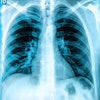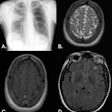Dear AuntMinnieEurope Member,
Apple is a widely respected company in terms of its customer service, management style, and ability to generate ideas and improve processes. But can medical imaging learn anything from an organization that operates in such a different sector?
It absolutely can, wrote Dr. Chris Hammond in a hard-hitting viewpoint column. He urges healthcare leaders to reflect on Apple's experiences from the 1980s and learn from the example set by Steve Jobs and others.
There is considerable scope for improvement in targeted surveillance for women treated for ductal carcinoma in situ, investigators from the Netherlands Cancer Institute have reported. Great understanding of the impact of surveillance compliance on cancer outcomes and survival is important, they noted. Learn more in the Women's Imaging Community.
Photon-counting CT is continuing to show great promise, and many researchers are focusing on its ability to produce high-quality images at lower radiation doses compared with conventional CT exams. In another Dutch study, the authors found the new technology can boost the sharpness of wrist images at 50% less dose. Find out more in the CT Community.
Meanwhile, Belgian researchers have evaluated the effectiveness of CT for diagnosing interstitial lung disease. Interstitial lung abnormalities found on CT can indicate early interstitial lung disease, but the condition's histopathologic correlates to imaging results remain unclear, they stated.
To end this week's newsletter on an upbeat note, I'd like to draw your attention to a Welsh initiative to increase the supply of medical radioisotopes. Hopefully this much-needed scheme comes together smoothly and promptly.



















